
|
||
|
Portland art blog + news + exhibition reviews + galleries + contemporary northwest art
|
||
Kengo Kuma's designs for the Japanese Garden Well, I've enjoyed my little vacation (a working one and my 1st in 10 years) from PORT but it is time to hit the beat again. I will update this post as the week goes by (*now complete).
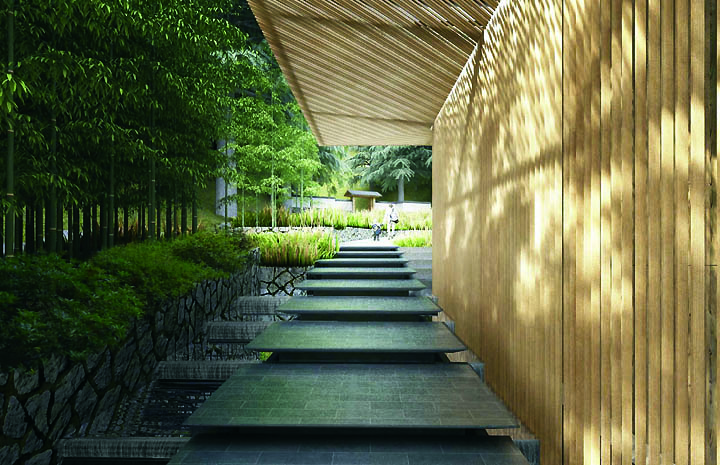
Cascading ponds and ticketing pavilion at the new entrance for the Japanese Garden. The trick for realizing all of these designs is to keep the light and airy nature of all the wooden elements (easy to draw, hard to engineer). The Portland Japanese Garden just released more developed designs for its expansion by Kengo Kuma. For an important reference in 2013 PORT spoke extensively with Kuma San and he discussed how a new type of Shoji screen as well as an ambitious plan to make the Portland's Garden a new model development in the tradition of the Japanese Garden balancing the traditional garden with enhanced visitor engagement in the living tradition of the Japanese Garden. Something that requires new buildings outside of the garden area. 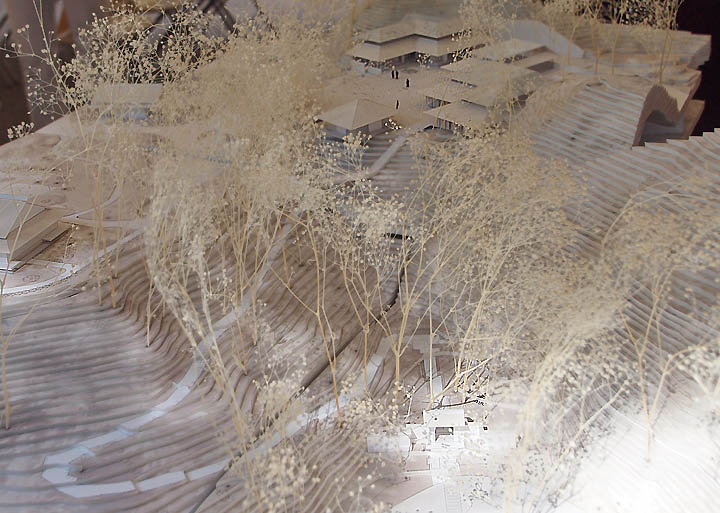 Model showing existing garden at left and new cultural village at top right This is a huge shift for Portland because it is what I call an externalized expression of culture... ie unlike ad agencies and art schools, which are great things, this is an inherently open to visitors entity that explicitly draws serious cultural sorts and less serious but still important tourists. The last architecture project to accomplish that is the areal tram, which also "externalized" Portland's interesting civic values. It is a showcase that sets a new bar for other very public institutions like the Portland Art Museum and The James Beard Public Market (which right now just seems like your typical high-level Nordic architecture as a public market (it is the early stages for them I'm sure it will improve and develop more personality based on its place). 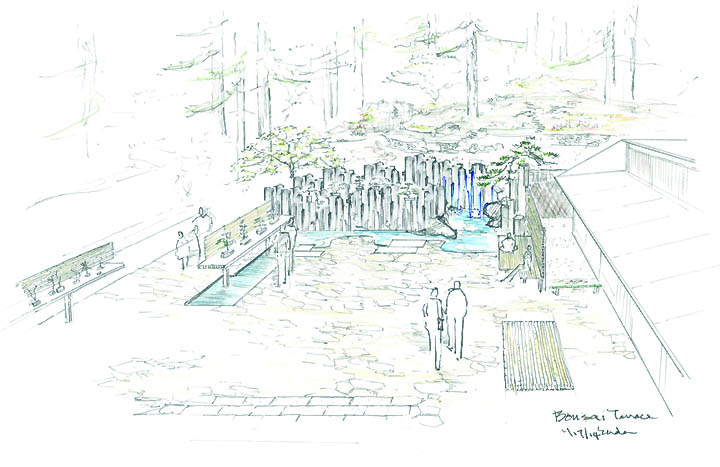 Bonsai Garden One very important point is that the existing garden areas wont be touched. In fact, the garden will get 4 new gardens, including a traditional moss garden and a basalt pillared bonsai garden. 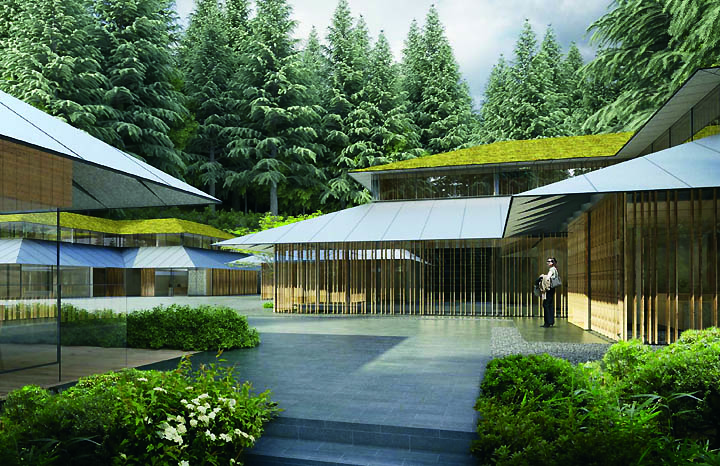 arriving at the Cultural Village after climbing the hill The expansion essentially puts a village outside the walls of the existing garden to expand its role as the premier learning center for Japanese culture outside of Japan. This is a new design and cultural ethos game changer for Portland and I like the green living roofs + shoji screens where emphasize the verticality of the garden, something which Kuma emphasized when we spoke a few years ago. The realized designs are so subtle as he seems to recall an entire forest not singular trees. So how is fundraising? The garden has already raised 20 million dollars (7.5 internationally) and will break ground September 8th and another 12-15 million will be required to finish the project. The garden will close and move some functions off site till March. This is a very important cultural mission Portland has been entrusted with, making Portland's Japanese Garden the cultural embassy for Japanese Culture outside of Japan. 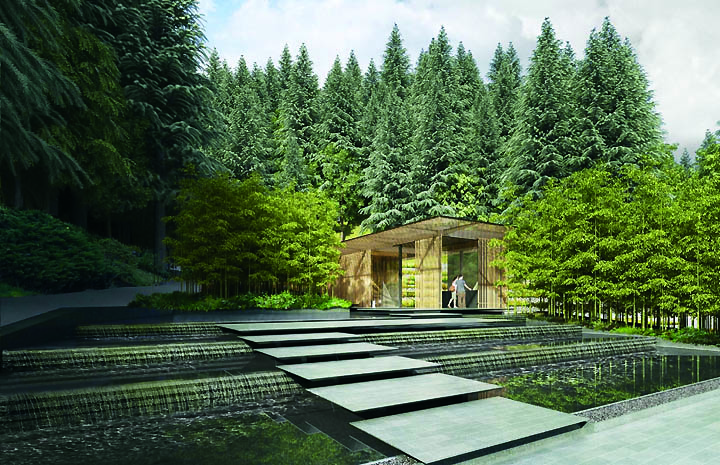
New water garden and ticketing pavilion at new entrance. First off I love how the garden experience now begins right at the parking lot in Washington Park across from the tennis courts with a water feature and pavilion. I can't tell you hop many times while playing tennis people would ask, "Here is the Japanese Garden?" It is a simple solution and allows the Garden to better control its grounds... an important thing when you get over 300,000 visitors a year (in the early days it received only 30,000... hence the need for an expansion). 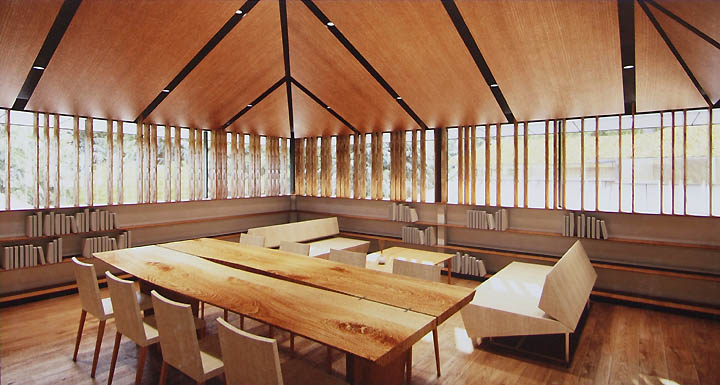 Upper part of Vollum Library, notice the triangular roof designs meeting the vertical shoji scrims to reinforce the douglas fir forest. As a motif it is subtle and well done throughout. What's more, I heard an interesting thing from Board Chairman Dorie Vollum, that, "We absolutely wanted and insisted that this project to be of the highest caliber." You simply do not hear that EVER at any major Portland institution. We simply aren't known for it but as you can see from the Vollum Library image here... they absolutely make good on that intention. Apparently, the Portland Japanese Garden has one of the best libraries on Japanese aesthetics around, further cementing itself as a kind of embassy of Japanese aesthetics for the rest of the world. 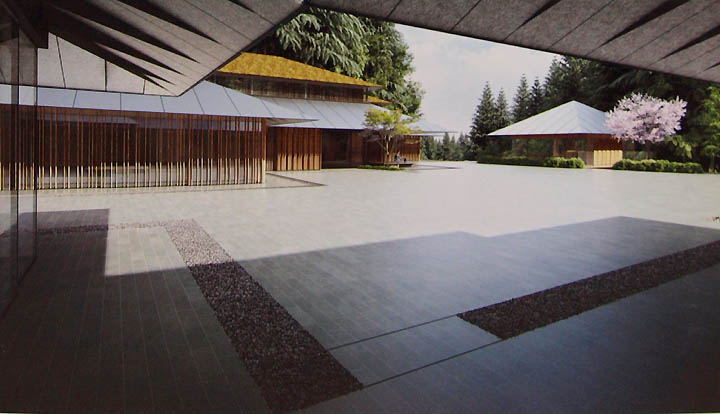 The Garden Village, a kind of cultural center outside the traditional gardens 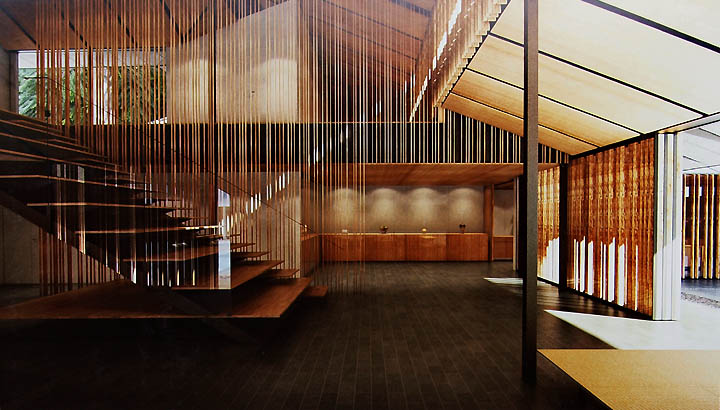 The "Living Room" inside the Cultural Village. A space for events as well as a gallery displaying the gardens permanent collection. It is appropriate that the Cultural Village is to be dedicated to Jordan Schnitzer by his mother Arlene as Mr. Schnitzer (His foundation is a PORT sponsor) takes particular interest in community outreach programs. In this case the center will become a place the rest of the world goes to learn about Japanese aesthetic arts and traditions). Children in Portland will have acess to learning opportunities no other place outside japan has. 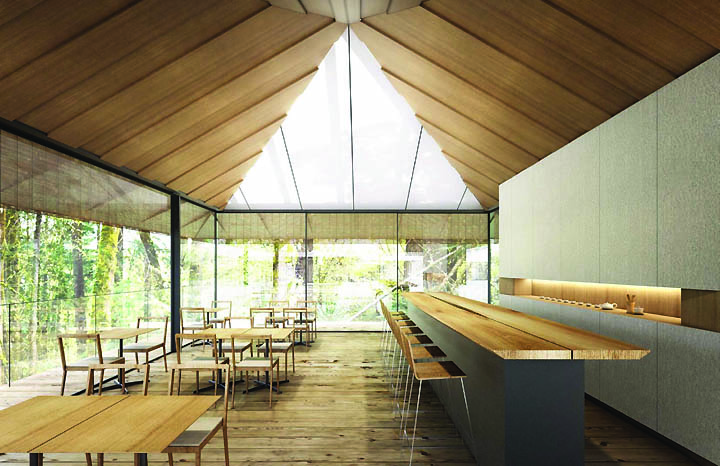
A more modern tea and meeting room allowing the traditional one to stay traditional. Kengo Kumais an architect who is especially adept at carrying tradition forward while still being radical. Sometimes the most radical thing is to honor the past in a deep and abiding way... not in just a few surface moves. Kuma's cafe spaces are always top shelf, nobody does them better. I think the design is fantastic. The new shoji or "screen" system made from vertical wood keeps everything light and porous yet modern... a sense of continuing tradition rather than anachronism. As mentioned before the vertical douglas fir forest is what Kuma is honoring here. 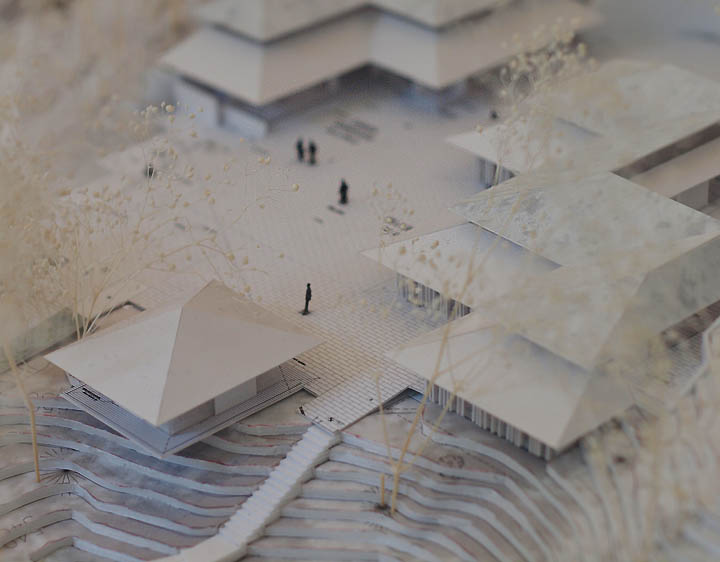
It is by far the most refined, subtle and impressive architectural project attempted in the Pacific Northwest since the Aalto Library in Mt. Angel (also with the Vollum family name on it) and the way it sets an international standard within a very public Portland institution is a bit of a turning point for us. Let's be clear an entire culture is choosing Portland as its showcase for living traditions outside its borders. In the past this would have been daunting but with the right architectural team and patronage these designs reshape our expectations of worldliness (and those of others) for Portland. The rest of the world is watching Portland and this project proves we are watching them too... in a respectful way that moves forward. Posted by Jeff Jahn on July 14, 2015 at 10:30 | Comments (0) Comments Post a comment Thanks for signing in, . Now you can comment. (sign out)
(If you haven't left a comment here before, you may need to be approved by
the site owner before your comment will appear. Until then, it won't appear
on the entry. Thanks for waiting.)
|
| s p o n s o r s |
 |
 |
 |
 |
 |
 |
 |
 |
 |
 |
 |
 |
 |
 |
 |
 |

|
Site Design: Jennifer Armbrust | • | Site Development: Philippe Blanc & Katherine Bovee | |

